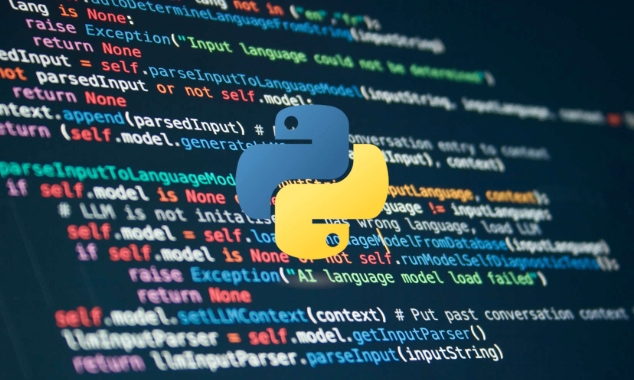fixture is a function used to provide preset environment or data for tests. 1. Use the @pytest.fixture decorator to define fixture; 2. Inject fixture in the form of parameters in the test function; 3. Execute setup before yield, and then teardown; 4. Control the scope through scope parameters, such as function, module, etc.; 5. Place the shared fixture in conftest.py to achieve cross-file sharing, thereby improving the maintainability and reusability of the test.

When testing with pytest , fixture is a very powerful feature to provide preset test environment or data for test functions. Below is a simple but complete pytest fixture example to help you understand how to define and use fixture.

? Basic fixture example: Database connection simulation
Suppose we want to test a module that operates "user data" and need a database connection object.
# test_user.py
import pytest
# Simulate database class Database:
def __init__(self):
self.users = {}
def add_user(self, user_id, name):
self.users[user_id] = name
def get_user(self, user_id):
return self.users.get(user_id)
def clear(self):
self.users.clear()
# Define fixture: Provide a clean database instance @pytest.fixture
def db():
print("\n[Setup] Create a database instance") # You can see the execution order database = Database()
yield database # Return to the test function to use print("[Teardown] to clean the database")
database.clear()
# Test cases use fixture
def test_add_user(db):
db.add_user(1, "Alice")
assert db.get_user(1) == "Alice"
def test_get_user_not_exists(db):
assert db.get_user(99) is None
def test_add_multiple_users(db):
db.add_user(1, "Alice")
db.add_user(2, "Bob")
assert len(db.users) == 2
assert db.get_user(2) == "Bob"? Run the test
Make sure you have pytest installed:

pip install pytest
Run the test:
pytest test_user.py -v
The output is similar:

test_user.py::test_add_user[Setup] Create a database instance PASSED[Teardown] Clean the database test_user.py::test_get_user_not_exists[Setup] Create a database instance PASSED[Teardown] Clean the database test_user.py::test_add_multiple_users[Setup] Create a database instance PASSED[Teardown] Clean the database
Each test function gets an independent db instance because the fixture function is re-executed before each test.
? fixture scope (scope)
You can control the multiplexing range of fixture, such as having multiple tests share the same instance:
@pytest.fixture(scope="module")
def db():
print("\n[Module Setup] Create database once")
database = Database()
yield database
print("[Module Teardown] Clean the database once")
database.clear()-
scope="function": By default, each test function is called once (most common) -
scope="class": Each test class is called once -
scope="module": Called once per.pyfile -
scope="session": The entire test session is only executed once
? conftest.py: Shared fixture
If you have multiple test files that need to use the same fixture, you can put it in conftest.py :
# conftest.py
import pytest
@pytest.fixture
def db():
database = Database()
yield database
database.clear() In this way, all test files in the same directory or subdirectories can be directly used with db without importing.
? Summarize the key points
-
@pytest.fixturedecorator defines reusable test resources -
yieldis setup before, then teardown -
fixturefunction name is passed into the test function as a parameter and automatically injected. - Implement cross-file sharing fixture using
conftest.py - The life cycle can be controlled through
scopeto improve performance
Basically that's it. fixture makes testing cleaner, reusable and easy to maintain.
The above is the detailed content of python pytest fixture example. For more information, please follow other related articles on the PHP Chinese website!

Hot AI Tools

Undress AI Tool
Undress images for free

Undresser.AI Undress
AI-powered app for creating realistic nude photos

AI Clothes Remover
Online AI tool for removing clothes from photos.

Clothoff.io
AI clothes remover

Video Face Swap
Swap faces in any video effortlessly with our completely free AI face swap tool!

Hot Article

Hot Tools

Notepad++7.3.1
Easy-to-use and free code editor

SublimeText3 Chinese version
Chinese version, very easy to use

Zend Studio 13.0.1
Powerful PHP integrated development environment

Dreamweaver CS6
Visual web development tools

SublimeText3 Mac version
God-level code editing software (SublimeText3)

Hot Topics
 Building RESTful APIs in Java with Jakarta EE
Jul 30, 2025 am 03:05 AM
Building RESTful APIs in Java with Jakarta EE
Jul 30, 2025 am 03:05 AM
SetupaMaven/GradleprojectwithJAX-RSdependencieslikeJersey;2.CreateaRESTresourceusingannotationssuchas@Pathand@GET;3.ConfiguretheapplicationviaApplicationsubclassorweb.xml;4.AddJacksonforJSONbindingbyincludingjersey-media-json-jackson;5.DeploytoaJakar
 A Developer's Guide to Maven for Java Project Management
Jul 30, 2025 am 02:41 AM
A Developer's Guide to Maven for Java Project Management
Jul 30, 2025 am 02:41 AM
Maven is a standard tool for Java project management and construction. The answer lies in the fact that it uses pom.xml to standardize project structure, dependency management, construction lifecycle automation and plug-in extensions; 1. Use pom.xml to define groupId, artifactId, version and dependencies; 2. Master core commands such as mvnclean, compile, test, package, install and deploy; 3. Use dependencyManagement and exclusions to manage dependency versions and conflicts; 4. Organize large applications through multi-module project structure and are managed uniformly by the parent POM; 5.
 css dark mode toggle example
Jul 30, 2025 am 05:28 AM
css dark mode toggle example
Jul 30, 2025 am 05:28 AM
First, use JavaScript to obtain the user system preferences and locally stored theme settings, and initialize the page theme; 1. The HTML structure contains a button to trigger topic switching; 2. CSS uses: root to define bright theme variables, .dark-mode class defines dark theme variables, and applies these variables through var(); 3. JavaScript detects prefers-color-scheme and reads localStorage to determine the initial theme; 4. Switch the dark-mode class on the html element when clicking the button, and saves the current state to localStorage; 5. All color changes are accompanied by 0.3 seconds transition animation to enhance the user
 css dropdown menu example
Jul 30, 2025 am 05:36 AM
css dropdown menu example
Jul 30, 2025 am 05:36 AM
Yes, a common CSS drop-down menu can be implemented through pure HTML and CSS without JavaScript. 1. Use nested ul and li to build a menu structure; 2. Use the:hover pseudo-class to control the display and hiding of pull-down content; 3. Set position:relative for parent li, and the submenu is positioned using position:absolute; 4. The submenu defaults to display:none, which becomes display:block when hovered; 5. Multi-level pull-down can be achieved through nesting, combined with transition, and add fade-in animations, and adapted to mobile terminals with media queries. The entire solution is simple and does not require JavaScript support, which is suitable for large
 python property decorator example
Jul 30, 2025 am 02:17 AM
python property decorator example
Jul 30, 2025 am 02:17 AM
@property decorator is used to convert methods into properties to implement the reading, setting and deletion control of properties. 1. Basic usage: define read-only attributes through @property, such as area calculated based on radius and accessed directly; 2. Advanced usage: use @name.setter and @name.deleter to implement attribute assignment verification and deletion operations; 3. Practical application: perform data verification in setters, such as BankAccount to ensure that the balance is not negative; 4. Naming specification: internal variables are prefixed, property method names are consistent with attributes, and unified access control is used to improve code security and maintainability.
 How to use Java MessageDigest for hashing (MD5, SHA-256)?
Jul 30, 2025 am 02:58 AM
How to use Java MessageDigest for hashing (MD5, SHA-256)?
Jul 30, 2025 am 02:58 AM
To generate hash values using Java, it can be implemented through the MessageDigest class. 1. Get an instance of the specified algorithm, such as MD5 or SHA-256; 2. Call the .update() method to pass in the data to be encrypted; 3. Call the .digest() method to obtain a hash byte array; 4. Convert the byte array into a hexadecimal string for reading; for inputs such as large files, read in chunks and call .update() multiple times; it is recommended to use SHA-256 instead of MD5 or SHA-1 to ensure security.
 python parse date string example
Jul 30, 2025 am 03:32 AM
python parse date string example
Jul 30, 2025 am 03:32 AM
Use datetime.strptime() to convert date strings into datetime object. 1. Basic usage: parse "2023-10-05" as datetime object through "%Y-%m-%d"; 2. Supports multiple formats such as "%m/%d/%Y" to parse American dates, "%d/%m/%Y" to parse British dates, "%b%d,%Y%I:%M%p" to parse time with AM/PM; 3. Use dateutil.parser.parse() to automatically infer unknown formats; 4. Use .d
 How to convert an Array to a List in Java?
Jul 30, 2025 am 01:54 AM
How to convert an Array to a List in Java?
Jul 30, 2025 am 01:54 AM
Converting an array into a list in Java requires selecting methods based on the data type and requirements. ① Use Arrays.asList() to quickly convert an object array (such as String[]) into a fixed-size List, but elements cannot be added or deleted; ② If you need a mutable list, you can encapsulate the result of Arrays.asList() through the ArrayList constructor; ③ For basic type arrays (such as int[]), you need to use StreamAPI conversion, such as Arrays.stream().boxed().collect(Collectors.toList()); ④ Notes include avoiding null arrays, distinguishing basic types from object types, and explicitly returning columns






